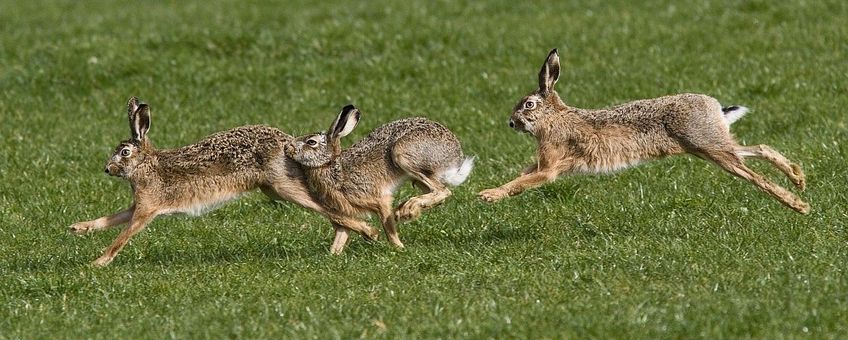
But whereas animal density is high in a zoo where they are kept in pens or cages, the question remained whether this method could also work in nature. A team of scientists from Wageningen Environmental Research has now found the answers.
It may still sound like science fiction, but the technique of extracting DNA from the environment to measure biodiversity is already routinely used. For example, DNA from water samples is used as a proven method to detect what fish or other aquatic animals live in water, and DNA from a soil sample can be used to determine what animals live in the soil. This so-called eDNA (‘environmental DNA’) has the great advantage that animals do not need to be captured, thus representing a non-invasive way of measuring biodiversity.

154 species identified
To test whether eDNA from the air will give a proper picture of wildlife present in an area, air samples were taken from three different locations in the Netherlands during one week, using different types of air samplers (see figure above). All of them have a wind vane and rotate in the wind to capture particles from the air by suction. They can sample for the duration of one week and collect one sample per day. In addition, camera traps were placed around the air samplers to see whether the species detected were actually present there.
It turned out that eDNA of all animals spotted on camera (9 mammal and 7 bird species) were also detected using the air samples. Moreover, they were actually detected on the days when those animals were also seen on camera. It was also found that among the three devices tested, the so-called ‘Burkard spore trap’ worked best by far. This device detected most species and presented the largest overlap with the camera images. Nevertheless, (large) animals were sometimes missed, such as a red deer that was spotted by the camera traps at Radio Kootwijk on a number of days, but that was not detected by some of the samplers.
Another remarkable outcome of the eDNA results was that many additional species were picked up in the air samples: a total of 154, including no less than 113 bird species, 33 mammal species, and even 4 fish and 4 amphibian species. Marcel Polling, lead researcher of the study: "We were thrilled so see that the species in this list were clearly related to the habitats where the samples were taken. For example, at Radio Kootwijk (Veluwe area), relatively more forest-dwelling species were found than at the other sites. And at Randwijk, located near a river, much more waterfowl was detected than in the other areas."

An exciting new technique in development
This research shows an innovative technique for mapping the biodiversity of vertebrates in an environment. But at the same time, it raises many questions: "What we don't know yet: from how far away can this DNA come?" says Polling. "And how long does it stay in the air before it breaks down? If a bird flies over once, do we immediately catch its DNA?"
Also, a lot of DNA from domesticated animals was picked up. In particular chicken and cow DNA, but from several exotic species as well. For most of them the source could be located quickly. For example, DNA of the red-crowned parakeet (a type of parrot) and Japanese quail was found in samples taken at Radio Kootwijk. On enquiry, these birds turned out to be kept by a hobbyist in a garden some forty metres from the sampling site.
Polling: "We however also found small amounts of DNA from a number of species that we couldn’t locate yet, such as Magellanic penguin and western capercaillie. These may have come from a zoo, but because the zoos are located far away from the sampling sites, this doesn’t seem to be very likely."
Thus, the study shows that taking DNA samples from air is a promising technique, which has potential for broad applications such as monitoring biodiversity and tracking of species in a particular area. But for now, it is critical to validate the results and to further develop the technique before it can become a robust and widely applicable tool for ecological research and nature management.
More information
- This research was funded by the Ministry of Agriculture, Fisheries, Food Security and Nature as part of the Knowledge Base Research Programme on Nature-inclusive transitions (KB-36), grant number KB-36-004-011.
Text: Wageningen Environmental Research
Images: Mark Zekhuis, Saxifraga (lead photo: hares, these are not the individuals found on the research sites); Marcel Polling
